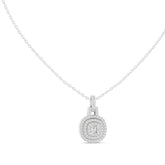The Fascinating World of Diamonds: A Gemstone of Extraordinary Brilliance
Introduction: Diamonds have captivated human beings for centuries with their breathtaking beauty and remarkable physical properties. As one of the most sought-after gemstones in the world, diamonds possess a unique allure that has made them a symbol of luxury, elegance, and eternal love. In this blog, we will delve into the fascinating world of diamonds, exploring their origin, formation, characteristics, and cultural significance.
-
The Formation of Diamonds: Diamonds are formed deep within the Earth's mantle, under intense heat and pressure, over billions of years. They are created from carbon atoms that are subjected to these extreme conditions, causing them to crystallize into the crystal lattice structure that gives diamonds their renowned hardness and brilliance. This natural process results in diamonds being one of the Earth's most precious and durable gemstones.
-
The 4Cs: Clarity, Cut, Color, and Carat: Diamonds are graded based on the four essential factors known as the 4Cs: Clarity, Cut, Color, and Carat. Clarity refers to the presence of internal or external flaws within the diamond, while Cut determines the stone's proportions and its ability to reflect light. Color assesses the diamond's hue, ranging from colorless to various shades of yellow and brown, and Carat measures the weight and size of the diamond. Understanding the 4Cs is crucial in evaluating a diamond's quality and value.
-
Diamond Mining: Diamond mining involves the extraction of diamonds from the Earth's crust. The process can vary, ranging from traditional methods like alluvial mining, where diamonds are found in riverbeds, to modern techniques such as open-pit and underground mining. Sustainable and ethical practices in diamond mining, such as conflict-free sourcing and environmental conservation, are gaining prominence in the industry, ensuring a responsible approach to diamond extraction.
-
Famous Diamonds: Throughout history, certain diamonds have gained worldwide recognition due to their extraordinary size, color, and historical significance. The Hope Diamond, the Koh-i-Noor, and the Cullinan Diamond are just a few examples of renowned diamonds that have captivated the public imagination and become legendary symbols of wealth and prestige.
-
Diamonds in Culture and Society: Diamonds have long been associated with love, commitment, and celebration. They are traditionally used in engagement rings and are often given as gifts to commemorate special occasions. Diamonds also hold cultural significance in various societies and have been used as symbols of power, status, and spirituality. Exploring the cultural and historical significance of diamonds provides insight into their enduring appeal.
-
Beyond Jewelry: Industrial Applications of Diamonds: In addition to their aesthetic value, diamonds possess unique physical properties that make them indispensable in various industries. Their hardness and thermal conductivity make them ideal for industrial applications such as cutting, grinding, and drilling. Diamonds are also used in advanced technologies like laser optics, high-pressure experiments, and even as conductors in electronic devices.
Conclusion: Diamonds are undoubtedly one of nature's most remarkable creations. Their dazzling beauty, combined with their remarkable strength and versatility, has made them timeless symbols of love, elegance, and luxury. Whether admired for their exquisite brilliance or appreciated for their multifaceted industrial applications, diamonds continue to captivate and inspire us, representing both natural wonder and human ingenuity.






